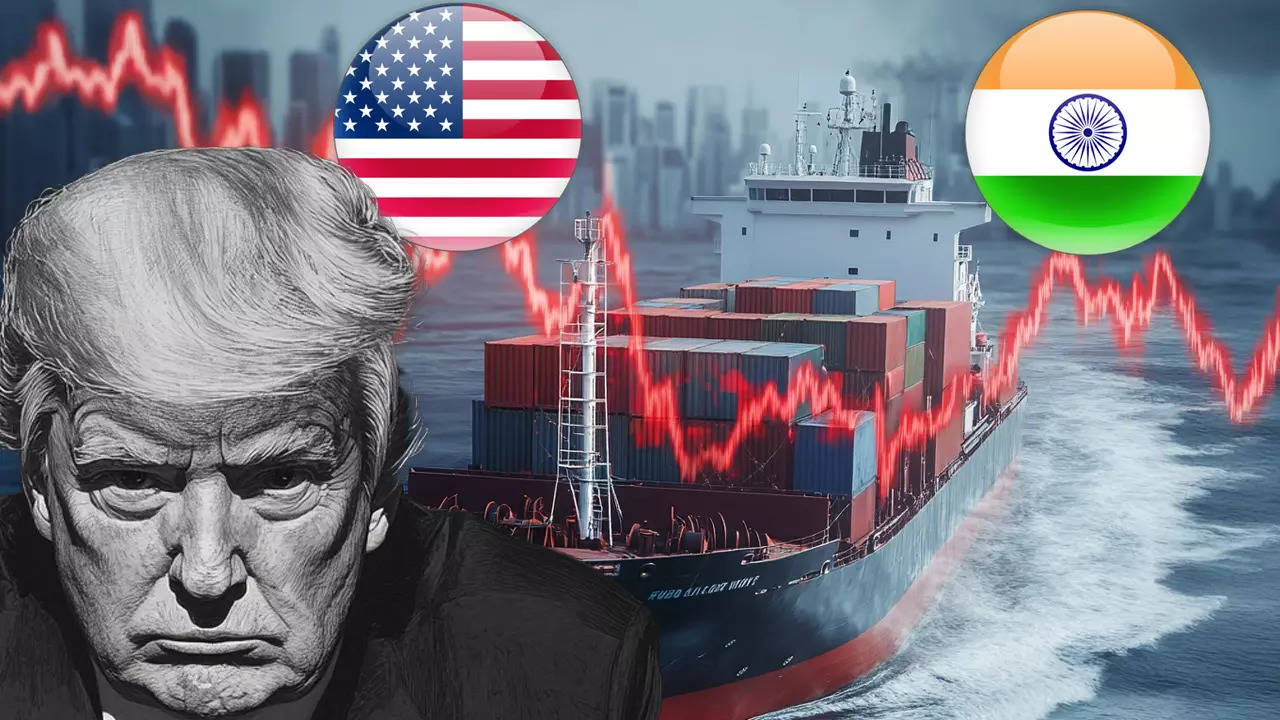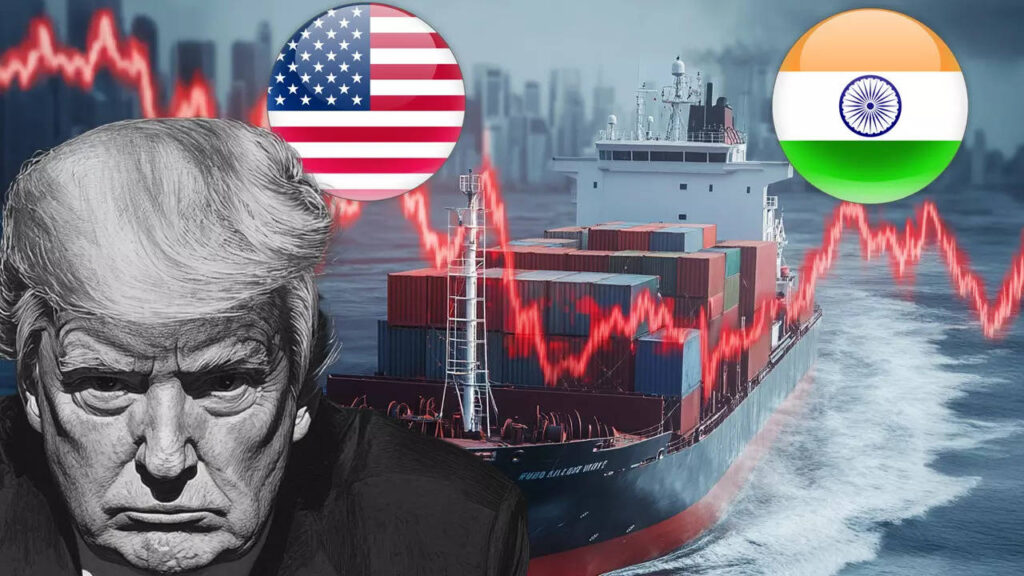

It is good to know that the government is already cautious about the possible increase in Chinese export trade and investment to India to exploit both the local market as well as to push exports to the USA taking advantage of the massive US import tariff difference between India and China. India needs to be cautious about China’s likely general merchandise export push, including automobiles, to the country to partly offset its anticipated export loss to the United States. The total US import tariff on goods from China now stands at 145 percent. President Trump had made a general announcement of 10 percent import tariff for all countries, and even higher tariffs for 60 trading partners having high trade imbalance with the US.
However, facing a global market meltdown, the US president backed down on his import tariffs on most countries for 90 days as some of these nations, including India, are engaged in bilateral trade negotiations with America. On the contrary, China challenged the US by imposing additional tariffs on goods imported from the US to 125 percent. Obviously, the two sides are not interested in doing trade with each other under the present environment. The US imported $438.9 billion in goods from China last year, according to the Office of the US Trade Representative, and exported only $143.5 billion in goods, leading to a massive trade gap or deficit. India’s annual merchandise import is worth well over half a trillion dollars.
India has also been hit hard by aggressive Chinese exports to the country while China has nearly blocked imports from India. In the period from April to February of 2024-25, India’s exports to China decreased by 15.7 percent to only $12.7 billion, while imports from China rose sharply by 10.4 percent to $103.7 billion. China has already emerged as the largest exporter to India, overthrowing the US, India’s long standing foreign trade partner and provider of its largest trade surplus from any country.
Now, the chances are China will further push its exports to India and also try to invest in manufacturing in India to serve the markets of both India and also probably the US. China has manufacturing facilities in a number of countries to push its exports to the US. They include Mexico, Cambodia, Vietnam and Thailand. The US, which accounts for India’s largest trade surplus from any country, is believed to be highly unhappy about India’s growing imports from China.
Notably, China’s industrial investment in Mexico has heavily surged, particularly in recent years, with a focus on manufacturing, especially automotive and electric vehicles, driven by factors like nearshoring and USMCA (United States-Mexico-Canada Agreement) trade benefits, though official figures may understate the true scale of engagement. Chinese foreign direct investment (FDI) in Mexico has seen significant growth, suggesting a rise from $38 million in 2011 to $386 million in 2021. Chinese investment is reportedly concentrated in the manufacturing sector, including auto parts, electronics, home appliances, and electric vehicles. Chinese EV manufacturers are using Mexico as a base to supply the US market, potentially evading tariffs on EVs coming from China. The latter’s growing presence in Mexico is a potential challenge to US economic and national security interests, particularly in strategic sectors like electric vehicles and infrastructure. Chinese direct investment could be over six times higher than reported by Mexican and Chinese authorities. Chinese companies are increasingly investing in industrial parks in Mexico, particularly in northern regions like Nuevo Leon, Coahuila, and Baja California.
For instance, BYD, a major Chinese electric vehicle manufacturer, is investing in Mexico, aiming to build a car factory and potentially dominate the EV market. Located north of Monterey in Mexico, Hofusan Industrial Park is home to manufacturing plants for ten Chinese companies, with investments aggregating $1 billion over the past three years. Other Chinese companies investing in Mexico include Ning B shung group, Tball Group, High Sense Bethel Automotive, and Kuka. China’s primary export destinations, including those that facilitate its exports to the USA, are known as Hong Kong, Vietnam, South Korea, and Japan. Canada, the UK and Germany are also China’s major trading partners for the US market. In 2022, the top five exporters of goods to the US market were China, Mexico, Canada, Japan, and Germany.
In India, BYD had proposed a $1 billion joint venture with Megha Engineering and Infrastructures (MEIL) to build electric cars and batteries, but the plan faced the India government scrutiny and was reportedly shelved due to security concerns. However, the Telangana government had identified a 200-acre site for BYD’s potential plant, near Olectra’s electric bus plant. Olectra Greentech, India’s largest electric bus manufacturer, is setting up a new greenfield factory in Seetharampur, near Hyderabad, Telangana, with an estimated investment of Rs.700 crore, aiming for an initial capacity of 5,000 buses and ramping up to 10,000 units. Olectra Greentech is believed to have a significant partnership with BYD for the manufacturing and maintenance of electric buses, with an extended agreement until 2030. Ironically, Megha Engineering was in the news as one of the top donors to political parties via electoral bonds, donating around 60 percent of the total Rs 966 crore to Bharatiya Janata Party (BJP), according to the data from India’s Election Commission.
Another Chinese automotive giant, SAIC Motor, the country’s largest vehicle manufacturer by sales volume and a Fortune 500 company, is already present in India, producing MG-branded vehicles, including electric vehicles in collaboration with the JSW group, at Halol in Prime Minister Narendra Modi’s home state of Gujarat. JSW Group holds a 35 percent stake in the joint venture named JSW MG Motor India. SAIC Motor holds a 49 percent stake in MG Motor India. Other stakeholders include Indian financial institutions (8 percent), MG India employees (5 percent), and MG India dealers (3 percent.) The company’s plea for ‘production linked incentive’ (PLI) has been under government scrutiny due to MG Motor’s strong China connection, requiring official approval for FDI from countries sharing land borders with India.
It is to be seen how the Indian government effectively tackles the aggressive Chinese pressure to review its foreign direct investment (FDI) norms. It is in the country’s strategic and geo-political interest that the government must block majority Chinese control, directly or indirectly, in industrial investments in India. To check the massive annual trade deficits with China, India should urgently hold bilateral trade talks with China to clearly link its imports with exports. Until then, the country could impose Trump-style heavy import tariffs on Chinese products and create strong non-tariff barriers to check imports from China. The latest US trade and tariff actions have exposed India’s commercial vulnerability. At a stake are the country’s economy, employment generation and the future exchange value of Indian Rupee. (IPA Service)


